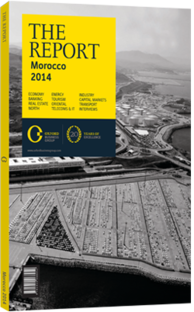OBG talks to David Toledano, President, Federation of Construction Materials Industries (FMC)

Interview: David Toledano
Where are the best sources of growth in the construction materials sector?
DAVID TOLEDANO: The sector is going through a delicate phase, with a drop of about 8% in cement consumption in 2014. The social housing segment, too, has slowed. Mid-range housing, however – whose prices should increase by up to Dh7200 (€639) per square metre due to recent changes in finance law – could become the main driver of growth in 2014. These projects are usually more expensive and allow developers to gain more added value. As a result, construction of mid-range housing should reach about 80,000 units in 2014. Likewise, public investment in construction and civil engineering should rise to Dh180bn (€15.98bn) in 2014, mostly from new infrastructure projects such as Safi Port, El Jadida-Safi highways, city projects, high-speed rail and new train stations. These indicators bode well for the recovery of the whole construction supply chain in 2014, especially as our main trade partners like Europe and the US show signs of recovery. This international economic conjuncture should gradually bring benefits to Moroccan exporters as well.
What niche segments should be targeted to boost exports in construction material?
TOLEDANO: Morocco boasts a wide panel of construction material products that can meet up to 99% of domestic needs. However, its industries face very tough competitors like Spain, the world’s first tile producer, with an overall capacity of up to 600m sq metres, compared to Morocco’s 80m sq metres. Even though Spanish production dropped by half, they still enjoy better economies of scale. The same level of competition prevails in the steel sector with France and Spain, and in the marble sector with Italy – especially since these countries have signed a free trade agreement.
Morocco struggles to compete in a world of high energy costs and global overcapacity (the practice of dumping has become increasingly common). As long as competition rules are enforced, Morocco’s construction materials sector has the potential to grow. In times of crisis companies used to lower their production volume. Now, it is increasingly hard for Moroccan companies to compete in an open and saturated market, where Chinese, Emirati, or Spanish companies can freely enter. The global ceramics sector has stood out by innovating at a high pitch, leading to an array of new products.
Two models stand before Morocco: remaining a low-cost, high-quantity producer, or upgrading and diversifying through smaller units. So far, local industry has relied on its low-cost labour, which has created jobs but little value added. It is vital that Morocco capitalise on its high-quality raw materials to upgrade production and innovate, so that it can compete globally.
What can be done to consolidate Moroccan construction companies regionally?
TOLEDANO: It is crucial that we encourage local small and medium-sized enterprises to integrate for high-scale national projects, such as the Ouarzazate solar power plant managed by MASEN. If Moroccan companies can be associated even 25-30% in mega-projects with international players, they will gain technology and know-how. This paves the way for future joint ventures in construction, both in Morocco and abroad. With the right expertise, Moroccan companies can build a two-pronged model: low-cost provider for Northern markets, and turnkey engineer for sub-Saharan ones.
On his last official visit, French President François Hollande praised the idea of Franco-Moroccan cooperation in Africa. Over the past few years, French companies have been replaced by Lebanese and Chinese companies. African markets have French-style consumption habits. France is keen to join hands with Morocco and return to these markets for turnkey projects with better know-how and technology. Soon, other countries will take interest in partnering with us to approach these markets. Morocco is increasingly perceived as a gateway to Africa. Many companies come here and develop a regional base for their operations.
You have reached the limit of premium articles you can view for free.
Choose from the options below to purchase print or digital editions of our Reports. You can also purchase a website subscription giving you unlimited access to all of our Reports online for 12 months.
If you have already purchased this Report or have a website subscription, please login to continue.

